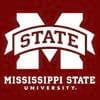Presence of Salmonella Enteritidis and Salmonella Gallinarum in Commercial Laying Hens Diagnosed with Fowl Typhoid Disease in Colombia
A severe outbreak of salmonellosis in commercial brown table egg layers first occurred in Colombia in 2006. From 2008 to 2012, 35 samples collected from commercial layers farms in the states of Cundinamarca, Santander, Bolivar, and San Andres, were positive for Salmonella enterica. Salmonella was isolated from liver and spleen (71.42%), pools of organs (liver, spleen, and ovarian follicles; 25.71%), and drag swabs (2.85%). Serotype was assigned using single nucleotide polymorphisms or DNA microarray hybridization. Sixteen strains of Salmonella Enteritidis, and 13 of Salmonella Gallinarum were identified. Seven strains yielded three unique sequences, and they were designated as UN0038, UN0052, and UN0054 by intergenic sequence ribotyping. These strains were later identified as Salmonella serotypes Isangi, Braenderup, and Yoruba, respectively, by DNA microarray hybridization. The discovery that a common human pathogen (Salmonella Enteritidis) was coisolated from farms with an avian pathogen (Salmonella Gallinarum) in similar commercial brown layer hens and in different regions indicates that it is important to investigate the dynamics of Salmonella infection and determine the serotypes circulating within the same ecologic niche.
Abstract published in Avian Diseases 58(1), 165-170, (30 August 2013). https://doi.org/10.1637/10598-062613-Case.1.





















